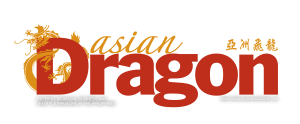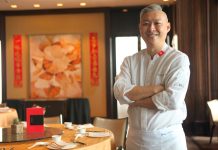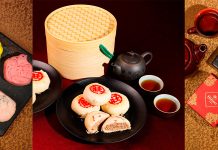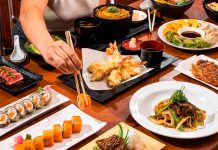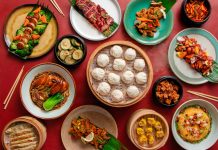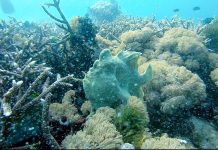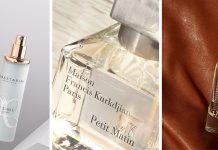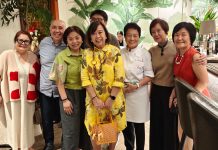PHOTOGRAPHS: PATRICK UY
Grooming: Cris Colina
(Henry Lim Bon Liong, chairman of Sterling Paper Group of Companies and a former president of the Federation of Filipino-Chinese Chambers of Commerce and Industry, Inc., passed away on August 2, at the age of 72. He is also remembered, however, for surviving a near fatal car accident and going on to champion hybrid rice technology to help Filipinos combat poverty. With the support of Professor Yuan Longping, known as China’s “Father of Hybrid Rice,” Henry Lim Bon Liong and his team developed the first Philippine tropical hybrid rice variety, SL-8H. Asian Dragon is reprinting this article from the magazine’s June-July 2016 issue in tribute to this advocate of agricultural innovation.)
In 1997, if you had asked me what the price of a kilo of rice in the market was, I wouldn’t even have known. I had no idea of the difference between dinorado and sinandomeng.
Erap (Joseph Estrada) was Vice President at that time. I am quite close to him. He had no portfolio, so he would wake up very late in the morning, and after lunch, he would call up some of his friends to come over. I would go to his house; it was just here in Greenhills. I don’t smoke, I can’t drink, and I don’t play pusoy or mahjong. So we would just talk. One day, he became very serious, and he said, “Henry, if ever I become the President of the Philippines, I would like to make agriculture my top priority. We should learn from China.
They have a very big population, yet, they are even able to export their grains.”
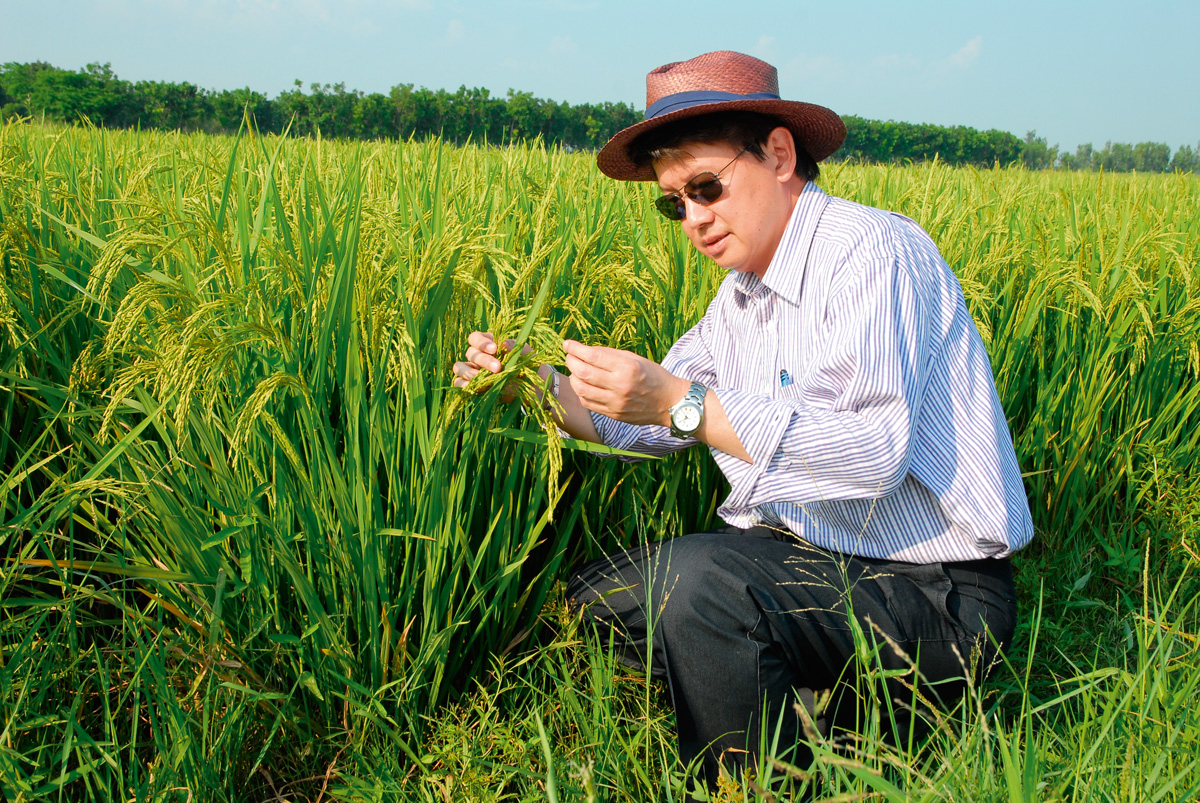
This aroused my curiosity. I did some research, and I found out that China has 22 percent of the entire world’s population, but only seven percent of the arable land in the world. How can seven percent arable land area feed a 22 percent population? In 1997, China already had a population of 1.2 billion of the world’s six billion. Today it has 1.4 billion out of a total 7.2 billion already.
I researched back to 1949, the year the Communist Party liberated China. China at that time was producing less than 110 million metric tons of grains per year. By the year 2000, China was producing more than 500 million metric tons of grain. But at that time, as the Western economists predicted, in the ’50s, ’60s and ’70s, more than 10, 20 million people in China died of hunger every year. It was revealed to me by the Vice Governor of Fujian province, in charge of agriculture, that in the year 1963 alone, 43 million people died of hunger in China. China before was “behind the bamboo curtain,” so all the bad news was being suppressed. But it’s all starting to come out now.

The Chinese government at that time advocated widespread farming, even with very low yield. They cut down all the trees in the forests and planted them with rice. Grasslands were burned and planted to rice. Lakes were reclaimed and planted to rice. But it wasn’t enough. They had to resort to the one-child policy, population control, rationing, and food coupons.
The Prime Minister of China came here in 1998, Zhu Rong Zhi. I was privileged to be invited to have lunch with him—it was a big group. He told us, “You know, even if we do not produce a single grain of rice in China, we will not go hungry. We have over 500 million metric tons of grains in our warehouses.” In fact, he had a terrible headache trying to find more storage to accommodate all the surplus. Every time he would go out in the field, and see farmers in the mountainsides planting rice, he would tell them to stop planting rice.
Now they are planting trees to replace the forests, planting grasslands as pasture for cattle, and restoring the old lakes. In the past few years, they had returned between 6 and 7 million hectares back to the forests, to the grasslands, to the lakes.

So what was the secret?
In 1998, Erap finally became president. Within 30 days, he sent his first Secretary of Agriculture, William Dar, and his Secretary of Agrarian Reform, Boy Morales, to China, along with some members of the Federation of Filipino-Chinese Chambers of Commerce. They were gone for a month. When they came back, I asked them, “O, what did you learn? Do you know anyone by the name of Professor Yuan Long Ping?” They shook their heads. Didn’t ring a bell. “So what were you doing in China? Did you not know that Professor Yuan Long Ping is considered a National Treasure in China? He is the father of hybrid rice. He is worth $50 billion because of his contribution to China, in agriculture. His stature is even higher than Deng Xiao Ping.”
Two Pings
At that time, they said, there were two Pings in China. If you want prosperity, you rely on Deng Xiao Ping, who modernized China and opened it up to the world. If you want to eat rice, you rely on Professor Yuan Long Ping.
I was introduced to Professor Yuan Long Ping in early 1998, through a common friend. We struck up a friendship, and he showed me what he was doing. I said, “Do you want to step out of China? Do you want me to be your stepping stone?” He said, “China has so much rice already.”
At that time, I was an entrepreneur. We were in the paper business, industrial properties, and we had a chain of department stores, a chain of Expressions outlets, call centers. Agriculture was farthest from my mind. [Henry Lim Bon Liong is the chief executive officer of the Sterling Paper Group of Companies, S.P. Properties Inc., and later, SL Agritech Corporation.]
My friend told me, “Henry, do you know that you are very lucky?” I asked, “Why?” He said, “Do you know that Monsanto, one of the Fortune 500 companies, invited the professor to be their adviser? He refused. Mahathir and other Asian countries have invited the professor to go there, he showed no interest. Even Li Ka-Shing, the richest man in Hong Kong, he’s the richest man in Asia right now, he’s starting rice research in the Southern part of China. He asked the Professor to head it; again, he showed no interest.”
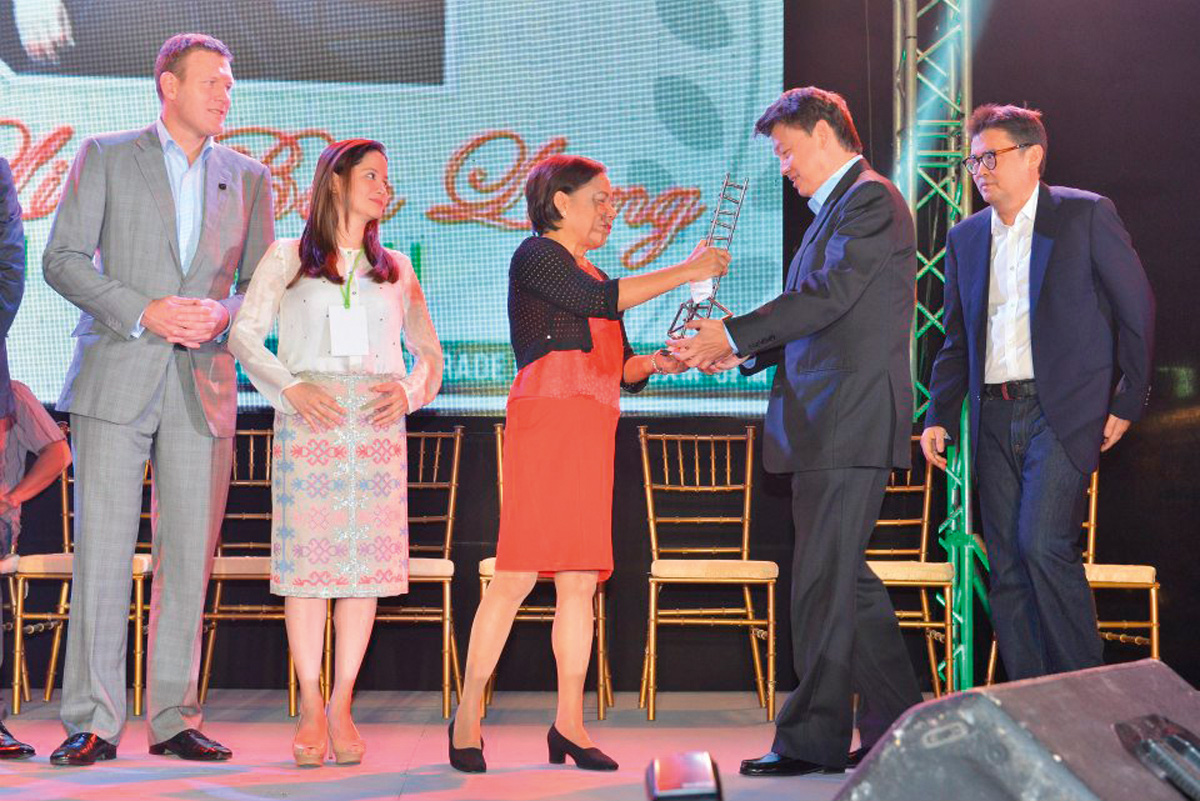
Again, I am an entrepreneur, and I know that one of the biggest risks of being an entrepreneur is not to take risks at all. You must take risks, although calculated ones. Professor Yuan Long Ping wanted me to be his stepping stone outside of China. So I accepted the challenge.
When I came back to the Philippines, I went to IRRI (the International Rice Research Institute), the world authority on rice. It’s been in the Philippines for the past 60 years. I talked to the second man of IRRI, a very well known scientist from India, called Dr. Birmani. I asked Dr. Birmani point blank: “How are we developing our rice program, especially hybrid rice?”
The exact words of Dr. Birmani to me were: “Mr. Lim, frankly speaking, China has the best technology for hybrid rice. Unfortunately, they do not want to share the information with us. Maybe hybrid rice will only grow far above the equator, in the temperate zone. After all, the Philippines is also a tropical setting. But even if you come up with a tropical hybrid rice, the taste of hybrid rice is terrible, so there is no market.”
I came back from IRRI very disappointed. But after three months, true to his word, Professor Yuan Long Ping sent me three of his men, technicians, scientists, bringing with them 75 different hybrid varieties. I leased a 5-hectare property in Laguna, and I planted all the varieties in small plots. The first season was a total failure. I could not use a single one of the varieties, for the reason that the rice cycle in the Philippines is about 90, maximum 120 days. The rice cycle in China is 140, maximum 160 days. It’s colder there. If you plant the China varieties, because of the tropical weather here, the flowering comes too early. After 85 days, everything is finished; you get empty grains.
So I was about to give up. But my mom [Maria Co Chiao Ti Lim] was very insistent. She said, “IRRI has already warned you that you cannot use the seeds coming from China. Then why don’t you try to develop seeds that are acclimatized for local conditions?” I said, “Mom, if IRRI cannot do it in spite of their heavy support from the rich countries, America, Japan, Germany, then how can I do it?” She said, “You have the national treasure of China behind you, why don’t you talk to him?” So I called him up. He said, “If you want to do it, you should be willing to sacrifice. Put up your own research center. I will have my people stay with you.”
I sent them out to scout for land. They found an ideal piece of land, 40 hectares, in Santa Cruz, Laguna. It was bounded by coconut trees, providing very good isolation from other rice fields. The soil condition was very good, the water source also. At that time, I was already into industrial subdivisions, so I said, probably, that land is P20 to P25 per square meter. So 40 hectares, maybe P10 million. So I said, let’s buy it. Unfortunately, the owner of the property did not want to sell. It belonged to a very rich family. So I said, look for other properties. After a few weeks, they came back and said, “There is nothing better than that piece of land.”
I got a broker, who went and talked with the owners. After a few days, the broker came back, and said, “Okay, the owners are willing to sell but at a very high price.” I figured, okay, maybe twice, so P20 million. But no, they wanted 10 times. From P10 million, it became P100 million.

I went to that property five times. I walked the perimeter, together with my mother. She said, “You know, if this is the piece of land that will provide the right variety of rice for us, then you should buy it.” Remember that 1998 was the Asian financial crisis. Interest rates were hovering above 35 percent; you could not even borrow from the bank. P100 million was only for the land, we would have to put up infrastructure, equipment. It was a bottomless pit. You did not know when you were going to succeed. But with the support of my mother, I went ahead. I had to draw funds from all of our other companies. My brothers were complaining, “These are our funds for opening new branches, now we cannot expand.” I bought the property, I put up the infrastructure. We spent hundreds and hundreds of millions. Then I went back to IRRI.
Surviving nuclear war
One of the biggest budgets of IRRI is to protect the treasures of mankind, the basic seed stocks. IRRI has around 170,000 varieties of rice. They have a huge underground seed vault, bombproof, kept below 30-35° C. Seeds can be kept there for the next 50–100 years. So if there was a nuclear war, and there were survivors, if they found their way back to IRRI, they could get the seeds of the rice and replant, and humanity could still go on. In the last few years, IRRI found a natural habitat in Antarctica, so they are keeping some of the seeds there already.
By this time, people were asking me, “Henry, what is this hybrid rice? Is this GMO, genetically modified?” I said, no, hybrid rice is never GMO. We have, all our lives, been eating hybrid fruits, hybrid vegetables, for hundreds of years. All corn is hybrid. So what is hybrid? If your parents are Filipino and Chinese, you are a hybrid. The offspring is always better. So why is it that we have had all these hybrid fruits, vegetables, corn for all these years, but hybrid rice is so difficult, that not even IRRI has been able to perfect it? That’s why Professor Yuan Long Ping is worth $50 billion, because of that.
It’s very easy to make hybrid corn. You just take two good varieties of corn. The male cornflower is at the top of the plant. The female flower is at the middle. When the male flowers’ pollen drops, it is caught by the female flowers. So it’s very easy to cross the two varieties. But rice is always a self-pollinating plant. The flower contains both the male and the female. So how can you do a hybrid? It’s impossible.
Professor Yuan Long Ping, in the 1960s, when he went out of his house, he would see the bodies of those who died of starvation, lying in the streets. The military trucks would come and pick them up and bury them. At that time, he was already an agriculturist. He wanted to help his own country. Big population with little arable land. There was no possibility to produce more land, so the only way was to increase the yield, two times, three times.
So, he set out to all the provinces to look for all the wild rice, hoping to find a high-yielding variety. In one province, he was so excited to see a variety of wild rice, standing above all the others, with very heavy grain panicles. When he opened the panicles, he counted more than 300 grains per panicle. Ordinary rice has only 90 to 120 grains maximum, so this was three times more.
He protected this variety until it was mature. Then he got the seeds and replanted. To his surprise, the yield dropped drastically. What did this mean? It meant that this must be a hybrid. This is because with all hybrids, whether corn or fruits, the characteristics are only up to the first generation. He was so surprised. “How can this wild rice be a hybrid?”
So he pondered this for many weeks, months, and he came up with a wild theory: In order for this to be a hybrid, there has to exist in nature a rice flower that is naturally male-sterile. If the flower is sterile, then it cannot self-pollinate. Now here comes another rice flower, which is not sterile, and the pollen drops into the first variety. So you get a hybrid. But the variety must be naturally male-sterile, it cannot be artificial. So he searched for it, and this time it took him seven years.
On the seventh year, in the Southern part of China, in the province of Hainan, by a railroad track, there was a small creek, and he found what he called a “wild aborted rice plant.” It was so small. When he examined the flower he knew it was the naturally male-sterile rice flower. Now when you have a sterile line, you need a maintainer line to maintain the sterility, and a restorer line for it to reproduce. So it was very complicated, technically. It took him almost 20 years to perfect it.
When finally he perfected it, the Chinese government took cognizance of hybrid rice. They ordered that the seeds be given free to the farmers for seven consecutive years, until all the farmers knew about hybrid rice.
China became self-sufficient in rice. Then the farmers started lining up to buy the seeds. So, going back to what I was doing. I had the technology of Professor Yuan Long Ping, I had the sterile line, the maintainer line, and the restorer line. Erap even went to my rice field in 1999. He asked me, “Henry, do you have a hybrid line we can use, so that we do not have to import rice?” At that time, I had some promising varieties, but I could not release them to farmers until I stabilized the parental lines. If the parental lines are not stabilized, sometimes the harvest will be big, other times it will be small, or even no yield at all. It would be very dangerous to release it. So I kept working on this, year after year.
Then something happened to our family in the year 2000. On November 17, to be exact. We had opened a department store in Olongapo. That night, at 10 o’clock, as we were traveling home, in Lubao, Pampanga, our family van was hit head-on by a container truck. In that accident, I lost my mother, who was sitting on my left side, and my brother Willy, who was sitting on my right side. The driver died the next day. I was seriously injured, five broken ribs, three on the left and two on the right. The blood vessels in my lungs were all busted. The doctors drew two liters of blood out of my lungs. I thought I was going to die. I was even cursing to heaven, why did you let this happen to my family?
Miraculous
But after two months, a miraculous thing happened. What I’m going to tell you, you don’t have to believe it, but it really happened.
On January 17, exactly two months after the accident, one of my Chinese rice scientists, Professor Zhang, woke up in the middle of the night to feel his bed moving. He was in Laguna, at the research farm. He thought it was an earthquake. When he opened his eyes, according to him, he saw my mother standing in front of his bed. How could that be? My mother was dead two months already. You know, my mother was born here, in Paco, that’s why her name was Maria, but she studied in China and spoke Mandarin very well. She was very close to the scientists, who only spoke Mandarin, and took care of them when they were sick, so they were very attached to her.
That morning, my mother told Professor Zhang, “You go out to the field again this morning, and take a careful look at all the rice flowers.” According to Professor Zhang, he even argued with my mother: ‘Yesterday, I already inspected all the rice flowers, and none of them are stabilized. So this morning, I will plow them all under and we will start all over again, like we have been doing, year after year. But my mother insisted, “No, take a look again.”
When he woke up the second time, the sun was coming up. Professor Zhang rushed out to the field with a big magnifying glass. As he was walking along the pilapil, he heard a small voice say, “Go directly to plot no. 8.” He inspected the tiny rice flowers, and collected some to examine under the microscope. Around lunchtime, I received a call from him, he was very excited. “Look, we have finally stabilized the line, you can finally produce the seeds for the farmers!”
That’s why the first variety of seeds that we came out with was called ‘SL-8H—8 stands for plot no 8. SL is the initials of my father. H doesn’t stand for Henry, it stands for Hybrid.
After only three seasons, farmers who had been producing three tons, four tons per hectare, started producing 10 tons, 12 tons, 14 tons, even 17 tons per hectare.
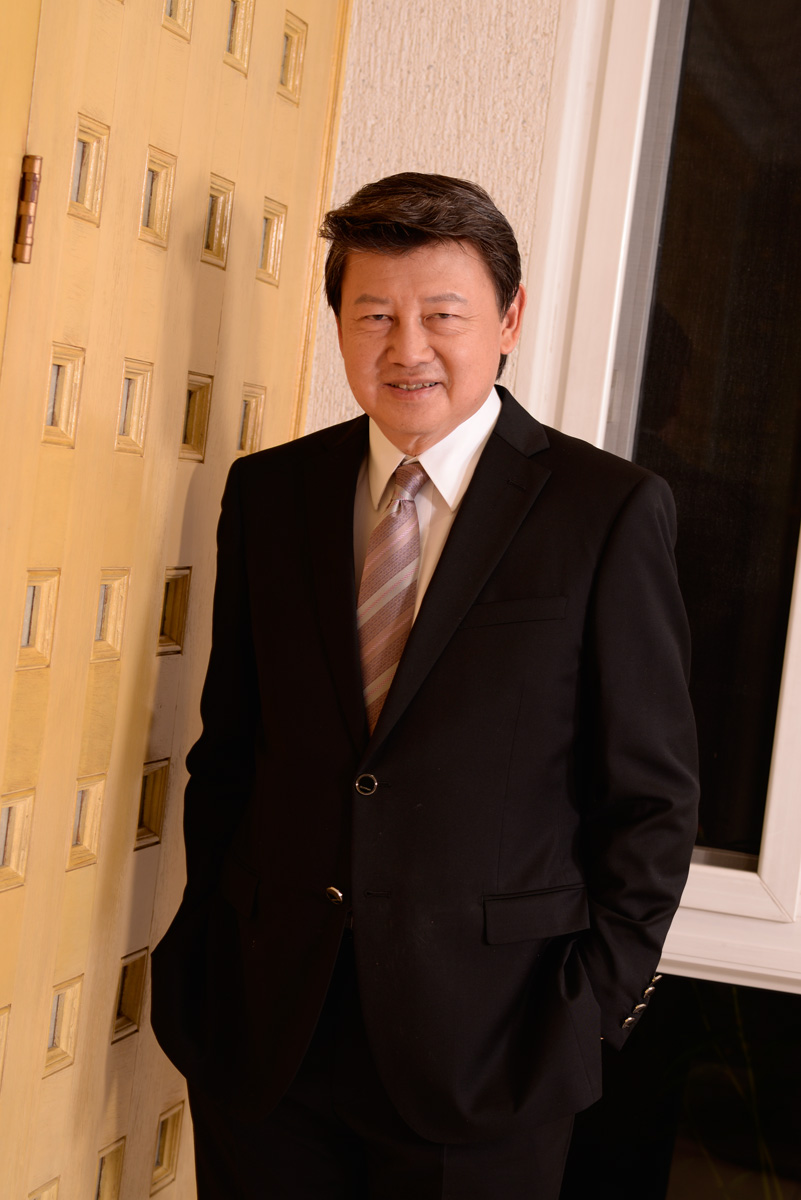
By that time Erap was no longer in power; it was already GMA (Gloria Macapagal Arroyo). I also have to give credit to her. At that time, together with Agriculture Secretary Cito Lorenzo, she was advocating the hybrid rice program. But she had also earmarked P14 billion to import rice. I actually totally disagree with economists who say, if the rice is so cheap in other countries, let’s just import the rice, why do we have to produce it? That is a very wrong way to do it.
We should remember, we need 12 to 13 million metric tons of rice every year. Did you know that international trading of rice, at its height, is only 41 million metric tons per year? That’s four percent of all the rice consumed in the world, which is 1.025 billion tons. If there is a crop failure of five percent, we won’t even be able to buy rice. The United Nations is saying that the 41 million will drop to 30 million, then 19 million metric tons. Just remember that rice is a commodity. In 2007, the price of rice went from $400 to $1,200 per ton.
The Philippines has a population of 100 million. Thailand has less than 70 million. The Philippines has four million hectares of rice land. Thailand has 10 million hectares of rice land. Vietnam has around 9.7 million. They have the Mekong River, and almost all their rice land is fully irrigated. Of the four million hectares in the Philippines, only 1.2 to 1.5 million hectares are irrigated. We are hit by typhoons 25 times a year; they just have monsoon winds, they don’t have typhoons. Indonesia has 12 million hectares of rice land. China has 33 million. India has 46 million. Thailand can afford to have an average productivity of 2.2 tons per hectare, yet they are self-sufficient, and can even export. In the Philippines, even with an average productivity of 3.6 tons per hectare, we are still lacking rice.
During the time of GMA, we were able to grow, from zero hectarage planted to hybrid rice, to around 200,000 hectarage. GMA, until 2004, was buying all my seeds and distributing them to the farmers at a subsidized price. So, that’s around five percent of the four million hectares planted to hybrid rice. We were able to increase our national yield from 2.9 tons per hectare, during the time of Erap, to 3.6 tons per hectare today. That’s with only five percent of total hectares planted to hybrid.
Nueva Ecija has around 170,000 hectares of rice land, but 40 percent of it is planted to my seeds, hybrid. Do you know what the average is, for Nueva Ecija alone? It’s 8.5 tons per hectare. Can you imagine, if the whole country could do just 5.5 to six tons per hectare, we would be self-sufficient already.
My target is one million hectares planted to hybrid rice. If we can do that, we will even be exporting rice.
AD

